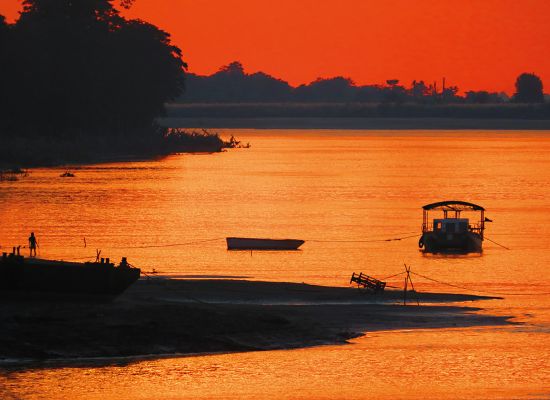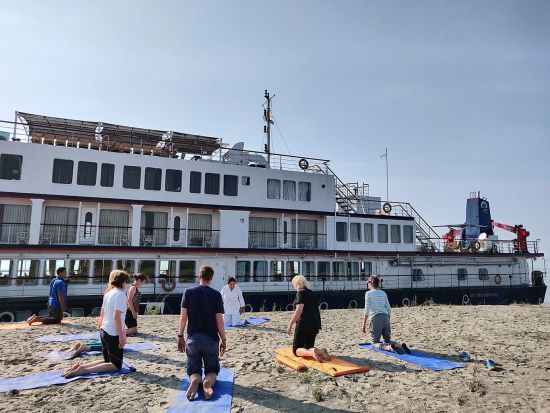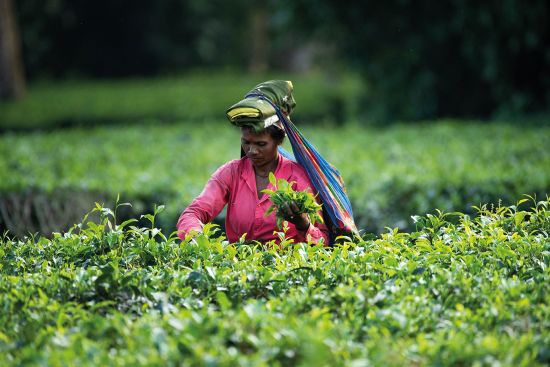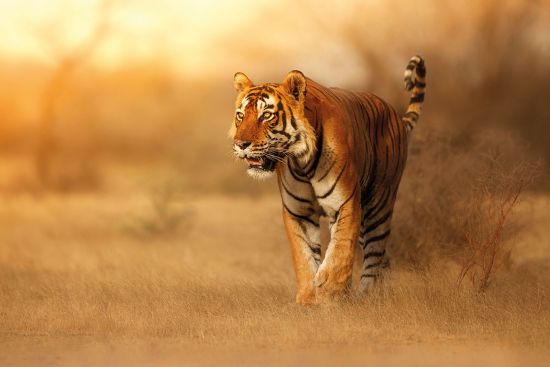
Brahmaputra River Cruise: Journey through Assam
A journey through Assam on a Brahmaputra River cruise in the shadows of the Himalayas is a once-in-a-lifetime experience
The Milky Way gleams in the clear night sky as my toes sink into the sand. I carefully carry the small piece of bamboo cane, topped with an oil-burning wick, down to the water’s edge. Then I crouch down and silently make a wish before floating my candle out into the darkness.
It’s a magical moment as I walk back to join the other passengers by the bonfire on the Brahmaputra sandbar and watch the snaking column of lights drifting along on the water. Slowly they change direction, their twinkling gradually growing dim before vanishing from view.

Inspired by the aarti ceremony that takes place at dusk on the banks of the Ganges, we are making an offering to an Indian deity; in this instance Brahma, the Hindu god of creation. “You never know which way the lights are going to go,’ explains our cruise director, Neena Morada. “It is different every time.”
Her remark encapsulates the many moods of the Brahmaputra, the Asian subcontinent’s wildest river. Rising on the Tibetan plateau and coursing 1,800 miles through China and India before emptying into the Bay of Bengal in Bangladesh, it slices through Assam in India’s far northeast.
The Brahmaputra valley collects nearly half the annual meltwater of the Himalayas and an equal amount of rainfall during the monsoon, when it can rise to the height of a three-storey building and a width of 11 miles, sweeping away homes, harvests and animals (even elephants) in its path.
Villagers living in makeshift homes on spindly bamboo stilts adopt the attitude that what the river takes away, it gives back. When the waters subside, they know they will be rewarded by rich alluvial soil on which to replant their crops.
Outside the rainy season, the ever-changing waterway is tranquil, but it still demands respect – making it the perfect off-the-beaten track destination for the more adventurous breed of river-cruiser. Sanjay Basu, a mountaineer and adventurer who once rafted along the Brahmaputra, pioneered cruising here in his role as managing director of Far Horizon Tours.
I am on a Brahmaputra river cruise on board the 46-passenger M.V. Mahabaahu. It first set sail in 2011 and today, it remains one of just a handful of vessels operating on this tricky river. (During our week, sailing downstream from Jorhat to Guwahati, a pilot vessel sails ahead of us, the crew using poles to check the ever-shifting navigable passages).

Assam is the very essence of India – a land of golden temples, perfumed with the scent of marigolds and incense; of grand crumbling palaces, chaotic main streets filled with rickshaws and sacred cows – but it still sees very few tourists. After leaving the teeming city of Kolkata and taking the two-hour flight to join the ship, we spot no other Western visitors during our entire time on the Brahmaputra.
The Mahabaahu crew also do their best to make us feel special, offering a warm welcome and being constantly on hand to dispense cold towels and refreshing juices (or a restorative G&T) when we return from excursions.
A rather plain-looking vessel on the outside, the M.V. Mahabaahu is charming within, decorated in a retro style with a cosy bar, a dining room with panoramic windows, and a large sun deck that proves to be the best spot for admiring the passing scenery (all sailing is done during daylight hours) while keeping an eye out for freshwater dolphins, birds and wildlife on the banks.
The 23 cabins, all decorated with Assamese silks and all overlooking the river, have a relaxed, colonial-style vibe. Some offer balconies and all have air- conditioning. Tea and coffee-making facilities, robes and slippers are among the other welcoming touches.
Each day brings an intoxicating mix of different sights. Sometimes we stroll ashore for a guided walk; other times we get into cars – with a maximum of three passengers and a guide in each – which prove less spine-jolting than a minibus when roads give way to bumpy dirt tracks.

On the first day we travel to Sivasagar, the ancient capital of the Tibeto-Burman Ahom dynasty that ruled Assam for nearly 600 years from 1228. Their legacy includes Rhang Ghar, a once grand sports pavilion with high platforms where distinguished spectators could get on and off their elephants.
Later, we feel like royalty as we enjoy a private lunch with the owner of one of the tea plantations, or estates, that make Assam the world’s major tea- growing region. We sip a brew made from the ‘second flush’ of leaves and tips and hear how the prized late harvest produces the finest tea.
Afterwards we walk through waist-high bushes where women in colourful saris pick the precious leaves, carrying them in baskets hanging from their heads. A trip later in the week takes us to a tea factory, where we see how the jade-green leaves are dried, sorted and graded.
On other days we visit remote villages, where an unscripted walkabout offers memorable snapshots of daily life. Women usher us into one-room homes that house entire families; men rest from working in the fields to wave. The local headmaster roars up on a classic Royal Enfield motorbike and leads us to his school – with two cruise passengers riding pillion – where his delighted pupils sing songs and show us their neat exercise books.
Next, we pay a visit to Majuli island. Meaning ‘land between rivers’, it is the largest river island in the world, although the surging waters of the Brahmaputra have seen it shrink from 340 to 136 square miles over the past 100 years. As well as being home to the Mishing people, one of the main ethnic tribes in Assam, Majuli has more than 20 Vaishnavite Hindu temples.

In one of these we sit cross-legged on a rug, watching spellbound as white-robed monks begin to chant, play cymbals and beat drums. They start to sway and then dance, leaping in perfect synchrony as the tempo gathers speed. Our guide tells us that this mesmerising performance is an integral part of their worship and we must not clap. Instead we bow our heads to receive a blessing.
We end our trip on another high note with a 4×4 safari through UNESCO world heritage site Kaziranga National Park – home to India’s ‘Big Five’. If you want to see the greater horned Indian rhinoceros, Asian elephant, wild water buffalo and bison, this is the place to come. And – if you’re very lucky – you might glimpse a royal Bengal tiger, about 100 of which roam the park.
Back on the ship we swap tales of the day over another delicious meal (the food on board is mostly Indian, always with meat and vegetarian options and a plethora of breads and condiments). The truly brave (or mad) can try bhut jolokia, grown in Assam and also known as ghost chilli, which is the subcontinent’s hottest pepper.
As I pour myself a refill of tea, I contemplate how I could hardly have enjoyed a more thrilling trip than a Brahmaputra cruise through amazing Assam.
